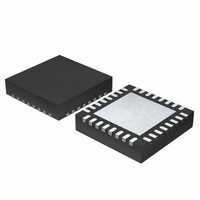ISL6568CRZ-TR5184 Intersil, ISL6568CRZ-TR5184 Datasheet - Page 24

ISL6568CRZ-TR5184
Manufacturer Part Number
ISL6568CRZ-TR5184
Description
IC CTRLR PWM 2PHASE BUCK 32-QFN
Manufacturer
Intersil
Datasheet
1.ISL6568CRZ-TR5184.pdf
(29 pages)
Specifications of ISL6568CRZ-TR5184
Applications
Controller, Intel VRM9, VRM10, and AMD Hammer Applications
Voltage - Input
3 ~ 12 V
Number Of Outputs
1
Voltage - Output
0.84 ~ 1.6 V
Operating Temperature
0°C ~ 70°C
Mounting Type
Surface Mount
Package / Case
32-VQFN Exposed Pad, 32-HVQFN, 32-SQFN, 32-DHVQFN
Rohs Compliant
YES
Lead Free Status / RoHS Status
Lead free / RoHS Compliant
Other names
ISL6568CRZ-TR5184
ISL6568CRZ-TR5184TR
ISL6568CRZ-TR5184TR
Available stocks
Company
Part Number
Manufacturer
Quantity
Price
Part Number:
ISL6568CRZ-TR5184
Manufacturer:
INTERSIL
Quantity:
20 000
Since the system poles and zero are affected by the values
of the components that are meant to compensate them, the
solution to the system equation becomes fairly complicated.
Fortunately, there is a simple approximation that comes very
close to an optimal solution. Treating the system as though it
were a voltage-mode regulator, by compensating the L-C
poles and the ESR zero of the voltage mode approximation,
yields a solution that is always stable with very close to ideal
transient performance.
Select a target bandwidth for the compensated system, f
The target bandwidth must be large enough to assure
adequate transient performance, but smaller than 1/3 of the
per-channel switching frequency. The values of the
compensation components depend on the relationships of f
to the L-C pole frequency and the ESR zero frequency. For
each of the following three, there is a separate set of
equations for the compensation components.
Case 3:
Case 2:
Case 1:
FIGURE 20. COMPENSATION CONFIGURATION FOR
R
FB
LOAD-LINE REGULATED ISL6568 CIRCUIT
-------------------
2π LC
R
C
f
R
C
C
C
0
-------------------
2π LC
R
C
C
C
1
>
R
C
C
=
=
C
----------------------------- -
2πC ESR
=
=
1
=
=
R
------------------------------------------------------------ -
(
2π
R
0.66V
------------------------------------------------ -
C
≤
FB
2πV
2
R
----------------------------------- -
2πV
FB
f
(
)
1
C
>
0
(OPTIONAL)
FB
V
--------------------------------------------
2
C
0.66V
<
f
----------------------------------------- -
0.66 V
PP
f
0
PP
24
PP
2πf
----------------------------------- -
0
IN
0.66V
----------------------------- -
2πC ESR
2
0.66 V
2π f
(
V
)
R
(
0.66V
R
2π
ESR
0
PP
FB
IN
FB
V
(
COMP
1
VDIFF
0
IN
)
pp
IN
2
R
V
f
f
0
0
IN
(
f
pp
) C
FB
FB
IN
0
ESR
2
LC
L
L
)
LC
LC
)
ISL6568
(EQ. 29)
0
.
0
ISL6568
In Equations 29, L is the per-channel filter inductance
divided by the number of active channels; C is the sum total
of all output capacitors; ESR is the equivalent series
resistance of the bulk output filter capacitance; and V
the peak-to-peak sawtooth signal amplitude as described in
the Electrical Specifications.
Once selected, the compensation values in Equations 29
assure a stable converter with reasonable transient
performance. In most cases, transient performance can be
improved by making adjustments to R
value of R
oscilloscope until no further improvement is noted. Normally,
C
Equations 29 unless some performance issue is noted.
The optional capacitor C
noise away from the PWM comparator (See Figure 20).
Keep a position available for C
high-frequency capacitor of between 22pF and 150pF in
case any leading edge jitter problem is noted.
Output Filter Design
The output inductors and the output capacitor bank together
to form a low-pass filter responsible for smoothing the
pulsating voltage at the phase nodes. The output filter also
must provide the transient energy until the regulator can
respond. Because it has a low bandwidth compared to the
switching frequency, the output filter limits the system
transient response. The output capacitors must supply or
sink load current while the current in the output inductors
increases or decreases to meet the demand.
In high-speed converters, the output capacitor bank is usually
the most costly (and often the largest) part of the circuit.
Output filter design begins with minimizing the cost of this part
of the circuit. The critical load parameters in choosing the
output capacitors are the maximum size of the load step, ∆I,
the load-current slew rate, di/dt, and the maximum allowable
output-voltage deviation under transient loading, ∆V
Capacitors are characterized according to their capacitance,
ESR, and ESL (equivalent series inductance).
At the beginning of the load transient, the output capacitors
supply all of the transient current. The output voltage will
initially deviate by an amount approximated by the voltage
drop across the ESL. As the load current increases, the
voltage drop across the ESR increases linearly until the load
current reaches its final value. The capacitors selected must
have sufficiently low ESL and ESR so that the total output-
voltage deviation is less than the allowable maximum.
Neglecting the contribution of inductor current and regulator
response, the output voltage initially deviates by an amount
The filter capacitor must have sufficiently low ESL and ESR
so that ∆V < ∆V
∆V
C
≈
will not need adjustment. Keep the value of C
(
ESL
C
)
---- -
dt
di
while observing the transient performance on an
+
(
MAX
ESR
.
) ∆I
2
, is sometimes needed to bypass
2
, and be prepared to install a
C
. Slowly increase the
C
March 9, 2006
MAX
from
(EQ. 30)
PP
FN9187.4
.
is












